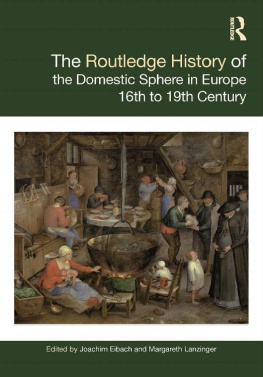Inside a Japanese Sharehouse
This book explores social change in Japan at the most intimate site of social interaction the home by providing a detailed ethnography of everyday life in a sharehouse. Sharehouses, which emerged in the 2007 sharehouse boom, are a deliberate alternative to life in the family home and are considered an experimental space for the construction of new social identities.
Through a description of the micro-level, mundane, material interactions among residents within a mid-sized, mixed-sex sharehouse, the book considers what these interactions indicate about existing and often conflicting ideas about intimacy, privacy, gender, the individual, family, community, and the home.
In so doing it highlights how sharehouse residents, though a dramatic rejection of the twentieth-century domestic model, with its ideal of the family home as a partnership between a male wage-earner and a dedicated housewife, and its implied separation of family and outsiders, are nevertheless uneasy about overturning existing gender roles and giving precedence to the individual over community, and are regarded as a foreign import.
Caitlin Meagher is a Visiting Assistant Professor at Skidmore College, USA.
Japan Anthropology Workshop Series
Series editor:
Joy Hendry, Oxford Brookes University
Editorial Board:
Pamela Asquith, University of Alberta
Eyal Ben Ari, Kinneret Academic College, Sea of Galilee
Christoph Brumann, Max Planck Institute for Social Anthropology, Munich
Henry Johnson, Otago University
Hirochika Nakamaki, the Suita City Museum
Founder Member of the Editorial Board:
Jan van Bremen, University of Leiden
Escaping Japan
Reflections on Estrangement and Exile in the Twenty-First Century
Edited by Blai Guarn and Paul Hansen
Women Managers in Neoliberal Japan
Gender, Precarious Labour and Everyday Lives
Swee-Lin Ho
Global Coffee and Cultural Change in Modern Japan
Helena Grinshpun
Inside a Japanese Sharehouse
Dreams and Realities
Caitlin Meagher
Mental Health and Social Withdrawal in Contemporary Japan
Nicolas Tajan
For a full list of available titles please visit: www.routledge.com/Japan-Anthropology-Workshop-Series/book-series/SE0627
First published 2021
by Routledge
2 Park Square, Milton Park, Abingdon, Oxon, OX14 4RN
and by Routledge
52 Vanderbilt Avenue, New York, NY 10017
Routledge is an imprint of the Taylor & Francis Group, an informa business
2021 Caitlin Meagher
The right of Caitlin Meagher to be identified as author of this work has been asserted by her in accordance with sections 77 and 78 of the Copyright, Designs and Patents Act 1988.
All rights reserved. No part of this book may be reprinted or reproduced or utilised in any form or by any electronic, mechanical, or other means, now known or hereafter invented, including photocopying and recording, or in any information storage or retrieval system, without permission in writing from the publishers.
Trademark notice: Product or corporate names may be trademarks or registered trademarks, and are used only for identification and explanation without intent to infringe.
British Library Cataloguing-in-Publication Data
A catalogue record for this book is available from the British Library
Library of Congress Cataloging-in-Publication Data
A catalog record has been requested for this book
ISBN: 978-0-367-56163-5 (hbk)
ISBN: 978-1-003-09667-2 (ebk)
Typeset in Times New Roman
by codeMantra
Caitlin Meagher has brought to our series a traditionally rich and detailed ethnography about a Japanese attempt to create a new type of housing, based on the conception of a foreign model but illustrating some very persistent Japanese ways of living. Shared housing is a common phenomenon in many parts of the world, often marking a kind of rite of passage between a family of birth and a family of procreation, but in this case in Japan, the dream is to create something new, something different and altogether more individual. The idea, according to the literature and publicity about the arrangement, was introduced not much more than a decade ago, and Meagher found herself in a newly established sharehouse, taking on residents before her very eyes, so she could observe and participate as a community developed around her. A common question asked of anthropological researchers is how far they influenced the society they work in; in this case, our author found herself stepping into a role that not only pre-dated her arrival but had already been imagined by designers of the living space.
This conundrum lays out the general focus of the book because, throughout her investigations, which examined the most domestic and intimate aspects of shared living quarters, Meagher identifies quite a stark contrast between the dreams and the realities of her housemates. Each resident has a room of their own, private space that is not usually entered by other members of the house, so the ethnography centres around the use of the areas set aside for cooking, eating, and socialising. Since Japanese living had formerly often involved all areas of a house to be shared, if perhaps in another more recent manifestation divided by generations, this maintenance of personal space is one of the important new aspects of shared housing. A house rarely stands alone in Japan, however, and the relationship between residents of the shared house and its community of neighbours forms another interesting focus of the book.
Personally, I found the subject fascinating because I myself lived in a shared house in Japan more than 30 years before the phenomenon was given a name and a set of marketing characteristics. In our case we shared sleeping space, divided by gender, and we had a mother figure to cook for us and keep the peace with the neighbours, but my memories are also of young people discussing and gradually finding themselves a place in the world they have inherited from their predecessors. My housemates wanted only to practice their English with me and the other foreign resident, and were otherwise happy to share their knowledge of Japan and Japanese, but we were all also seeking ways to carve out new lives in a world that we wanted to mould for ourselves. Meaghers book documents change at a much more basic level of shared domesticity, but she also identifies some interesting, persistent continuity in expectations she identifies as particularly Japanese. Her account brings the reader into the lives of her housemates in an intriguing, well-written way, and I recommend it heartily to anyone interested in the ever-changing but remarkably resilient Japanese life.
Joy Hendry
June 2020
Lets live life like an international caf together, but alone.
Cheznew sharehouse manual, p. 1
Into the field
I arrived in Naniwa on the first of March 2012. I had never heard of this city, where I was to conduct short-term research on a project about behaviour in public spaces. I had found Cheznew in an internet search for short-term accommodations in Osaka and had paid three months rent upfront, believing the property to be within the city proper. On the basis of representations on the website, I had also believed the sharehouse to be well-established. In fact, as I was soon to learn, it was neither.





